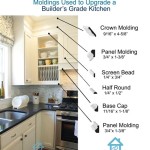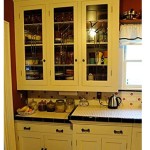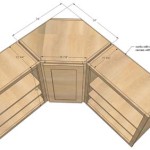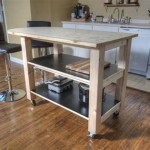Kitchen Cabinet Definition: A Rich History Rooted in American Tradition
Kitchen cabinets, an indispensable part of any modern kitchen, have a long and fascinating history. Their evolution from simple storage units to the elaborate and stylish creations we see today is a testament to the changing needs and tastes of American homeowners over the centuries.
Early Origins: Built-in Storage for Practicality
The earliest kitchen cabinets emerged in the 18th and 19th centuries as built-in fixtures designed primarily for practical storage. These cabinets were often simple box-like structures, crafted from locally available materials such as wood or metal. They featured basic features such as shelves and drawers, and were primarily used to store food and utensils.
The Victorian Era: Embracing Aesthetics and Refinement
During the Victorian era (1837-1901), kitchen cabinets began to take on a more refined aesthetic. Victorian homeowners sought cabinets that were both functional and visually appealing, leading to the introduction of decorative features such as ornate moldings, carved detailing, and glass paneling. These cabinets were often made from high-quality wood species such as cherry, mahogany, or walnut.
Expansion and Standardization in the 20th Century
The 20th century witnessed significant advancements in kitchen cabinet design and manufacturing. The rise of mass production techniques and the availability of new materials such as plywood and laminate led to the development of more standardized and affordable cabinets. These cabinets featured a wider range of sizes, styles, and finishes, making them accessible to a larger population of homeowners.
Post-World War II Innovation: Convenience and Durability
Following World War II, kitchen cabinets underwent further innovation to meet the changing needs of homeowners. The introduction of new materials such as plastic laminate and particleboard allowed for more durable and moisture-resistant cabinets. Cabinets also began to incorporate features such as adjustable shelves, pull-out drawers, and lazy Susans, enhancing convenience and organization.
Contemporary Era: Emphasizing Style and Personalization
In recent decades, kitchen cabinets have evolved into highly customizable and stylish elements of kitchen design. Modern cabinets offer a vast selection of colors, finishes, and styles to match any décor. Homeowners can choose from traditional styles such as shaker or raised panel, or opt for more contemporary designs with sleek lines and bold colors. Cabinets have also become more integrated with other kitchen appliances and fixtures, creating a cohesive and functional workspace.
Conclusion: A Living Legacy of American Ingenuity
Kitchen cabinets have come a long way since their humble beginnings as simple storage units. Today, they are not only essential for functionality but also play a significant role in defining the aesthetic and atmosphere of a kitchen. The evolution of kitchen cabinets is a testament to the American spirit of ingenuity and the ever-changing demands of homeowners. As kitchens continue to evolve, so too will the designs and features of the cabinets that serve as their cornerstone.

Kitchen Cabinet Political Dictionary

Kitchen Cabinet Definition Image Martz

Kitchen Cabinet Wikipedia

The History Of Hoosier Cabinets

Ways To Distinguish European Style And American Cabinets

Kitchen Wikipedia
What Is The Meaning And Significance Of Political Terms Like Kitchen Cabinet Shadow Quora

Ways To Distinguish European Style And American Cabinets

Ways To Distinguish European Style And American Cabinets

What Is A Shaker Style Kitchen And Where Did It Come From








